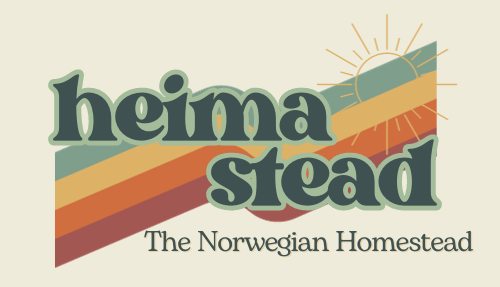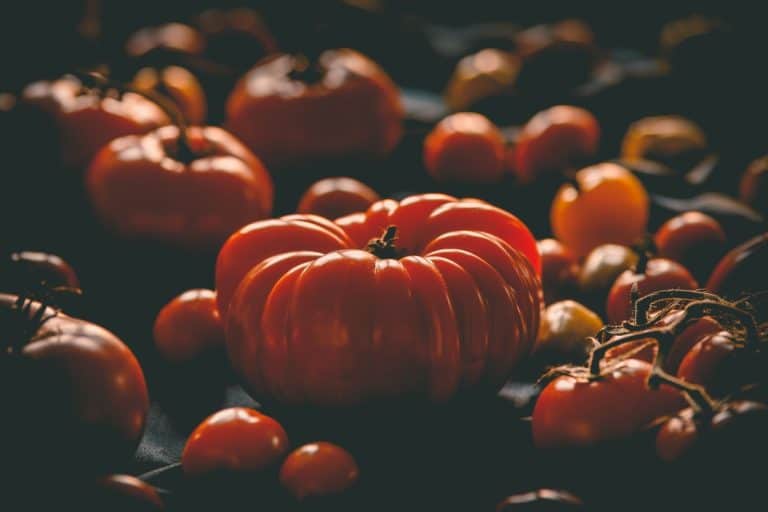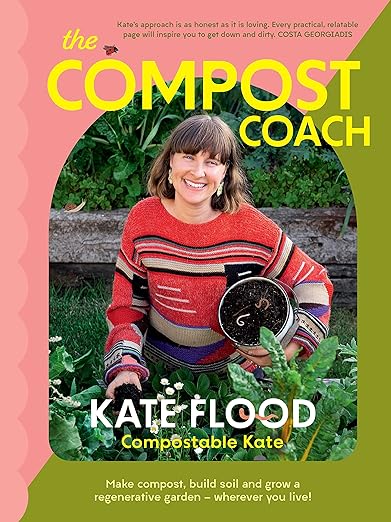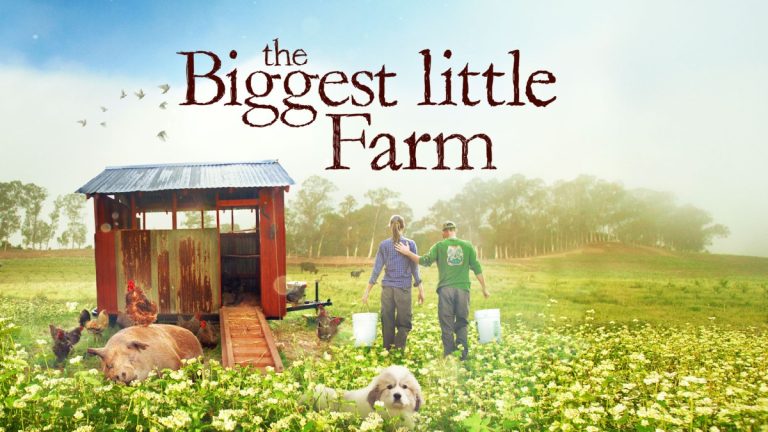Starting Seeds Outdoors Year-Round & Direct Sowing
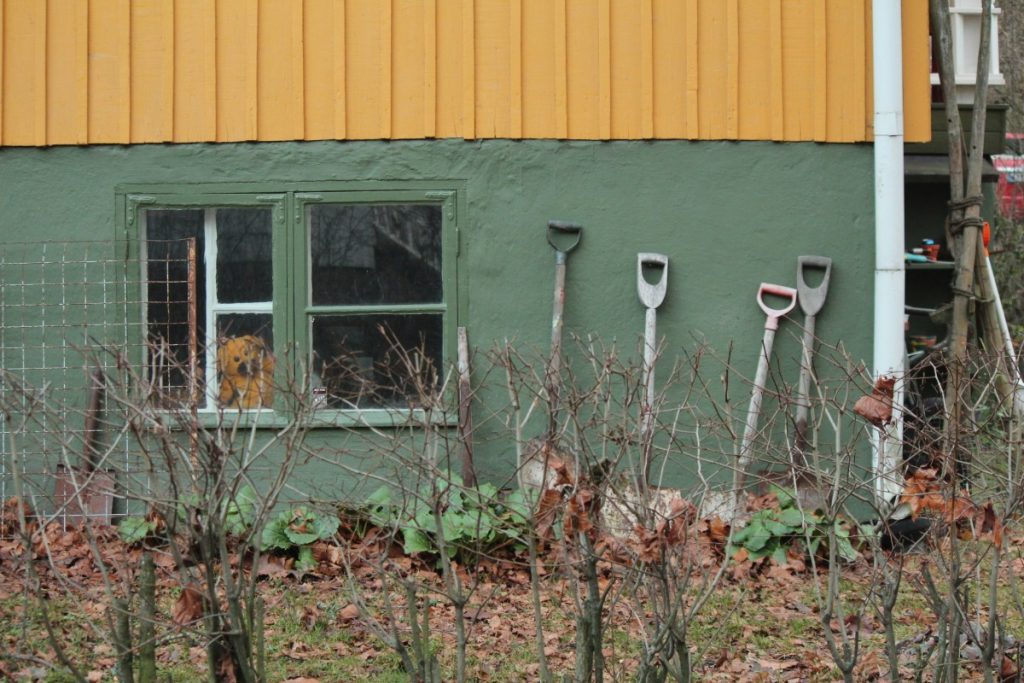
As soon as the new year arrives, my mind gravitates to seed catalogs and garden planning. What makes gardening so exciting (and a little daunting) are all the factors outside of our control. We can’t predict the weather or fluctuating bug or pest populations. Like with our kids, we just do our best to give our sprouts the best possibilities for survival and growth. I have found that starting seeds outdoors is a great way to develop robust and healthy plants right from the start. It is the best way to get the best results for the least amount of effort.
There are two ways to start your garden. You can start seeds yourself (indoors or outdoors) or buy small starter plants, also called transplants. Most hobby gardeners do a little bit of both to save time and eliminate some risks associated with starting delicate plants.
This post looks at the methods of starting seeds outdoors, both in soil blocks or containers and directly into the ground. However, before moving on we’ll take a quick look at exactly why starting seeds outdoors can be so beneficial.
8 Reasons Why Starting Seeds Outdoors is a Good Idea
- Sunlight: Natural sunlight provides a broader spectrum of light than artificial lights can. This includes crucial UV rays, that promote healthier and stronger seedling growth. It is more intense and consistent with the natural day-night cycle, allowing for efficient photosynthesis and providing seedlings with necessary rest periods.
- Cost savings: Starting seeds outdoors is a cost-effective alternative to purchasing young plants or transplants. It eliminates the need to buy established plants, which can save money in your gardening budget.
- Adaptation to outdoor conditions: By starting seeds outdoors, you allow them to acclimate to the environmental conditions they will ultimately face in your garden. This helps plants develop stronger roots and prepares them for potential challenges such as temperature fluctuations and pests. Some plants, particularly root crops and flowers with tap roots, do not transplant well. By starting these seeds outdoors, you can sow them directly into the garden soil, saving time and resources.
- Stronger and healthier plants: Outdoor seed starting encourages plants to develop robust stems and leaves due to their exposure to natural wind movement. This helps plants grow sturdy and resilient, preventing weak stems or leggy growth.
- Proper spacing and thinning: When starting seeds outdoors, it is easier to space the seedlings properly to avoid overcrowding. This allows the young seedlings adequate space for growth and reduces the competition for nutrients, water, and sunlight. Thinning overcrowded seedlings is also easier outdoors.
- Natural hardening off: Starting seeds outdoors eliminates the need for a separate hardening-off process. Plants raised entirely outdoors will naturally adjust to fluctuating weather conditions and become more resilient, ensuring a smoother transition when planting them outside permanently.
- Better integration with natural cycles: Outdoor seed starting aligns with the natural growing seasons, allowing plants to sync their growth patterns with mother nature. This can result in healthier and more productive plants, as they follow the natural rhythms of the changing seasons.
- A head start: Starting your seeds in containers or soil blocks will give you an early start and longer growing season. The growing medium heats faster than the garden, and the warm soil speeds up the germination rate.
Outdoor Seed Starting Methods
Winter Sowing
Despite the name, you can use the method of winter sowing year-round. If you, like me, are itching to get your hands dirty long before the Christmas decorations are even down, then this method is for you too. Winter sowing is a way of starting seeds outdoors while still giving them a big head start on seeds started in the ground.
Most homesteaders have some extra time on hand during the coldest months of the year. To utilize that time you can simply sow seeds in little mini-greenhouses outdoors and nature will take care of the rest (well, most of it).
Upcycle opaque or clear containers with lids you’ve got lying around. Milk jugs, soda bottles, and takeaway containers work well. Put some drainage holes in the bottom and some rain penetration holes in the top. Place your containers outside someplace where they won’t be saturated in a large rain event and weigh them down with something heavy like stones or a metal bar. This is to prevent them from being taken by strong winds.
Seeds left to develop in the ground during winter will naturally undergo a period of cold stratification, priming them for germination once temperatures rise above the last frost date in early spring. As soon as the soil heats to that temperature the seeds will germinate and grow into baby plants. When their true leaves are out and the plants are ready, you can pot them up or plant them directly into the garden.
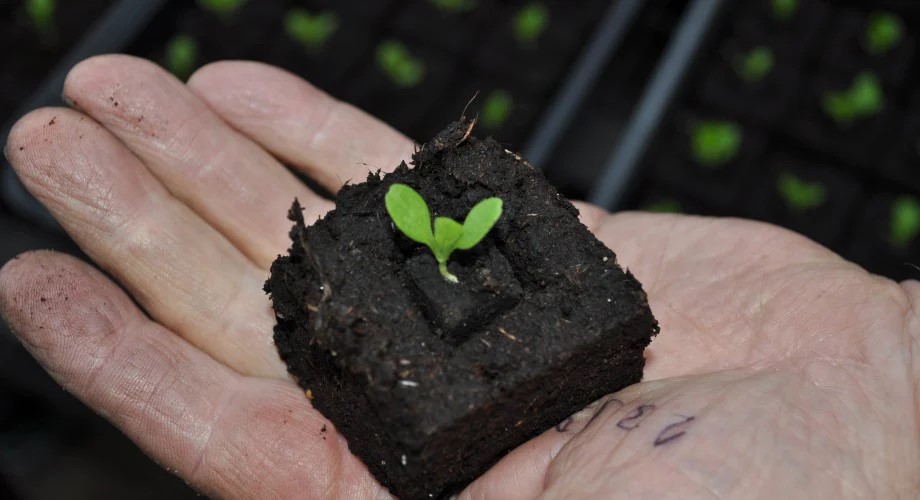
Soil Block and/or Containers
Whether you use soil blocks or containers for seed starting outdoors is simply a matter of preference. Although soil blocks have some great benefits regarding root health, containers offer more control and predictability.
Soil blocks are small cubes of soil that provide a more natural environment for seedlings to grow in. They allow the roots to grow more freely and prevent transplant shock when it’s time to transplant the seedlings to the ground or larger containers in your garden.
Additionally, soil blocks are cost-effective since you can make your own using a mold and compost mix. As an aspiring minimalist, I appreciate not having to store too many containers over winter. Generally, soil blocks allow a great growing environment that promotes air circulation and drainage. This reduces the risk of overwatering and root diseases. This is the soil blocker I use. The general rule of thumb is to plant at a depth that is two to three times the width of the seed.
Containers are a common and versatile option for starting seeds. They come in various sizes and materials, allowing you to customize the growing environment for each seedling. If you don’t want to spend money buying new containers then you probably already have what you need lying around. Upcycle soda bottles or milk cartons by cutting off the top. Remember to put drainage holes in the bottom to ensure good drainage.
The limited space can hinder root growth so this type of seed starting does require extra care concerning that. Containers can easily be moved indoors in the event of a random, late frost night. However, by placing your soil blocks on a tray they’ll also be easy to move if needed.
Direct Sowing
Direct sowing means that you plant seeds directly into the ground, rather than starting them in a container and transplanting them later. This method allows plants to grow naturally in their intended environment. Eliminating the transplantation process and the need to move your new seedlings daily for hardening saves you time.
Direct sowing is particularly beneficial for crops that do not like being transplanted. This includes root vegetables like carrots and beets, or plants with long taproots, like sunflowers. It’s also preferred for plants that need a longer growing season or are more hardy and can withstand outdoor conditions from an early stage. Such as peas, lettuce, and kale.
Direct-sown seeds will be taking their cues from the weather and won’t germinate until the soil temperature is appropriate for seed germination.
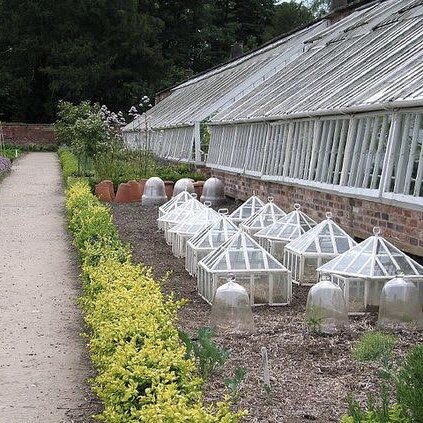
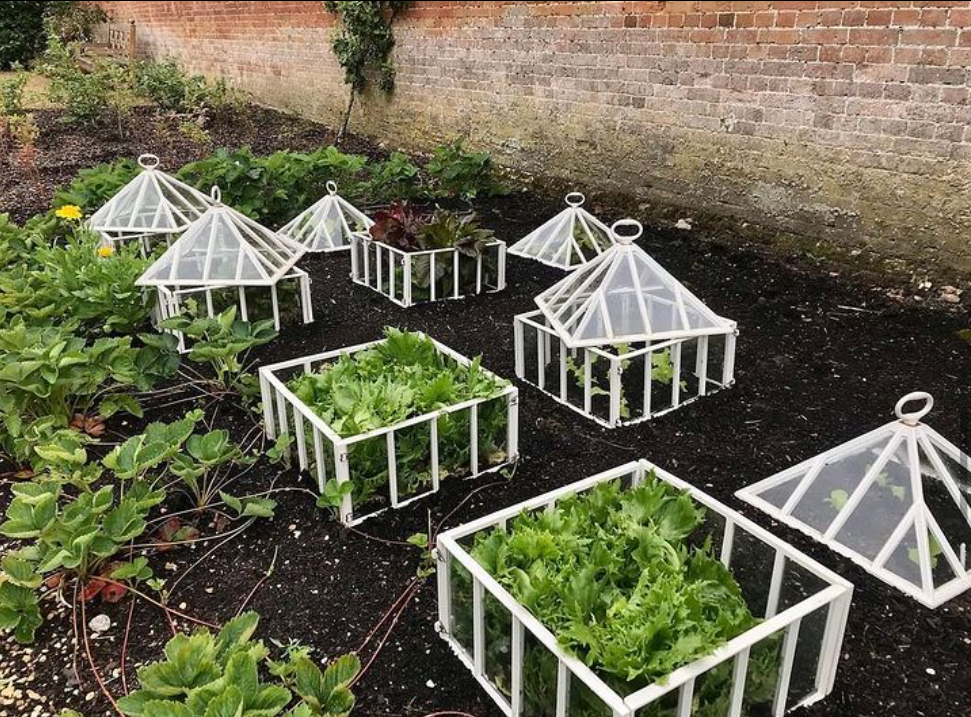
Cloche
Those with a short growing season can use a cloche to make direct sowing easier. A cloche is a clear or opaque structure placed on the garden bed to heat the cool soil and increase germination rates. Traditionally it’s been made out of glass, but a soda bottle with the bottom cut off works just as well. The cloche should be placed on the soil surface 8-10 days before sowing. The greenhouse effect will heat the ground and help retain the heat even in a cold period. In addition to earlier germination, it’s useful in protecting delicate plants against the elements.
Like with containers you have to ensure air circulation and remove the cloche on warm days. Not only does this prevent your seedling from overheating but it slowly acclimates it to the wind and colder temperatures. It’s a great way to expand the growing season, take advantage of early warm weather, and up your chances for success.
Seed Starting Outdoors in Greenhouse
A greenhouse is a structure with walls and ceilings of transparent or translucent material, such as glass or plastic. The material’s transparency allows sunlight to enter and trap heat, creating a warm and protected environment inside. A greenhouse often has a heat source and sometimes also supplemental light. This creates ideal conditions for starting and growing plants. This is especially helpful in areas with a shorter growing season and cold temperatures.
Starting seeds in a greenhouse offers several advantages. Firstly, the controlled environment provides optimal conditions for germination and seedling growth. You can easily ensure consistent temperature, humidity, and protection from the elements, like wind and hail.
Another great thing about starting seeds in a greenhouse is that it extends the growing season. Allowing for an earlier start and longer harvest into the late summer and even fall. This is especially important in regions with a shorter season or unpredictable weather patterns. Also, the greenhouse protects your seedlings from pests and diseases, minimizing the risk of them being damaged or destroyed.
There are a few drawbacks to starting seeds in a greenhouse. First of all you have to build it and the initial cost of setting one up can be significant. Then there are maintenance costs, including cleaning and repairs. Secondly,a greenhouse requires monitoring and regular adjustments of temperature, humidity and light levels to prevent overheating or excessive moisture.
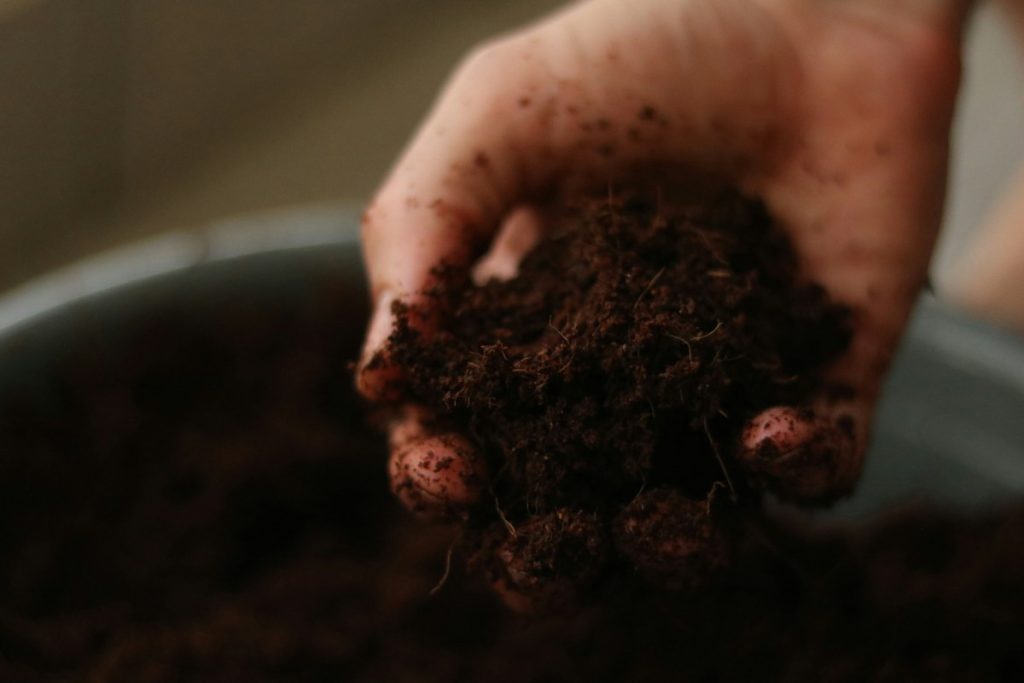
Starting Seeds Outdoors in an Unheated Tunnel
If you, like me, haven’t built the greenhouse of your dreams yet, then you can use an unheated tunnel or hoop house. Although your seeds won’t germinate as fast as they would indoors or in a heated greenhouse, they will still develop faster than they would in the ground.
This alternative saves you a lot of time and effort as your seedlings will be acclimated. As with everything I need my gardening to be as simple and automated as possible. Allowing me the freedom to go away or do other things.
The main risk in an unheated tunnel is cold temperatures. The danger of frost ruining all your hard work is legitimate. Especially warm season crops, like tomatoes and peppers, are at risk. If you place your soil bricks or containers on a tray you can easily take them inside if there’s a predicted frost coming. We have a tray rack in our basement that we use for this – and heaps of other things!
Now that you know which method to choose for starting your seeds, you’re probably wondering which seeds to choose! We’ve made a list of the best heirloom seeds for your survival garden and where to buy them. Head over here to learn the difference between heirloom, hybrid, and GMO and find the most reputable retailers of quality seeds.
Start Seeds Year-Round!
Whether you choose to start your seeds indoors or outdoors, in a heated greenhouse or a tunnel, you’re off to a great start. Putting a seed in some soil (even if you’re doing hydroponics) is the first step. The only way of learning is to just get your hands dirty. Your soil, weather, and climate are unique. And as soon as you start getting to know the conditions of your garden you will be able to develop your own distinctive methods and routines.
The great thing about starting seeds outdoors is that you can do it whenever. Get started with some winter sowing today! And please keep me in the loop. I’d love to know what seeds you’re sowing first and whether you decide to use soil blocks or containers.
I do my best to produce helpful content that you can revisit again and again. If you feel like this is a good post then please consider sharing it with a homesteader or gardener in your life. If you feel like something is missing I’d love to hear what so I can keep updating and improving. Leave a comment or send me an email. I would love to hear from you and I answer every one.
